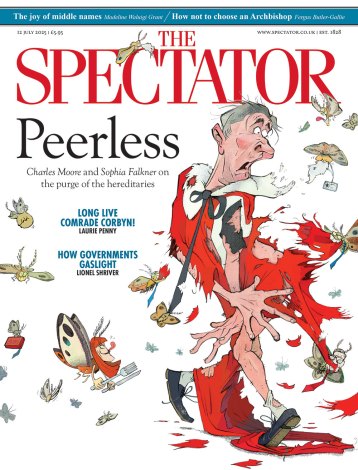Two of the most popular operas in the repertoire, works which I adore, but which I’m almost always disappointed by productions of; yet on two consecutive evenings in the Wales Millennium Centre I gained intense pleasure from each of them.
Two of the most popular operas in the repertoire, works which I adore, but which I’m almost always disappointed by productions of; yet on two consecutive evenings in the Wales Millennium Centre I gained intense pleasure from each of them. What went right?
Both Il Trovatore and Die Fledermaus are works of overflowing tunefulness, with almost inscrutable plots. The first duty of the producer — once it was considered to be his only duty — is to ensure that the audience is fully involved in the action, which it can only be if it’s clear what the action is; and thus that for all the abundance of familiar melodies these pieces aren’t treated as costume concerts.
The producer of Trovatore, Peter Watson, in close collaboration with the designer Tim Hatley, not only elucidates the drama of the opera, but also enables the excellent team of singers to make all those famous arias into expressions of the characters’ passions, something which I have only otherwise experienced with this work when listening to it on one of its great recordings. The sets are stark, with immense walls and columns and very little else, except where the odd prop is called for. The lighting, appropriately gloomy, and the generalised ‘Renaissance’ costumes do all that’s necessary to enable the singers to confront one another or retreat into anguished soliloquy.
The result is that Trovatore, which I suspect even confirmed Verdians tend to patronise, is shown to be every bit as sombre and powerful and serious as Simon Boccanegra, currently a somewhat overestimated opera, but with much fresher inspiration.
Katia Pellegrino is a singer I haven’t seen or heard before, but she is a star. With a warm, rich tone and steadiness throughout the whole range, and a capacity to shape Verdi’s soaring phrases, all she lacks, perhaps, is adequate volume at a few key moments. She is a responsive actor, but so is everyone in this production. Her Manrico, Gwyn Hughes-Jones, gave his role all it needs, including a thrilling top C in ‘Di quella pira’, while still making it part of the ongoing drama. Veronica Simeoni’s Azucena is a more restrained creation, both in appearance and voice, than we are used to, but she is vivid, distraught, and brings her narration to life. Di Luna tends usually to get a rough deal, but in David Kempster’s portrayal he seems a worthy rival to Manrico.
Even so, all that could have been in vain if Andrea Licata had not conducted such a detailed but fervent account. There has been a growing tendency among conductors of this score since Karajan to turn it into something more delicate than it is. Licata realises that it needs a more varied approach than the old let-’em-have-it style, but doesn’t stint on that, for the Anvil Chorus or the Miserere — the latter was tremendous, with Pellegrino sounding, in her desperation, almost as much of a wounded animal as Callas in her Paris debut in 1958.
Die Fledermaus is a new production of WNO and, if not quite so successful, that is more for musical then dramatic reasons. Is this opera a celebration of champagne and its capacity to make frivolous people utterly idiotic, or is it a searching commentary on the non-working class of a collapsing society? Both, clearly, which John Copley of course realises, and realises too that the best way to get that across is not to mess around.
He, too, is lucky with his designer Tim Reed, who contrives to make flimsy sets suggest elegance, a hint of decay, and Orlofsky’s affluence. While everyone else is bent on enjoyment, and knows just which illicit liaison will enable them to get it, Prince Orlofsky (I suppose it’s significant that his voice seems not yet to have broken) is helplessly bored. All his guests are pretending to be someone they aren’t, which means that when, in the cold light of morning in a prison, they all find out who the others are, there is no room for recrimination. Blame it all on champagne and go on dancing.
Johann Strauss’s genius is, in this one opera, just as apt and penetrating as Mozart’s is in Così fan tutte. Where Mozart’s characters preposterously declare that they will be guided in future by Reason, Strauss’s know that there is nothing to do but plan the next intrigue. The performers in this production don’t exactly convince on this score, though they all sing decently; and in the case of Mark Stone as Eisenstein, the most completely drawn character, there is no cause for anything but celebration.
Thomas Rösner’s conducting is pretty good, though really a richer sound is required for some of the most sensuous music in this wonderful score. But its most inspired part, the final few minutes of Act II, where everyone starts to take themselves seriously, and might even be right to make the attempt, was magical. And congratulations to Copley for getting the singers to speak the dialogue in a natural way, even if that resulted in some inaudibility.





Comments